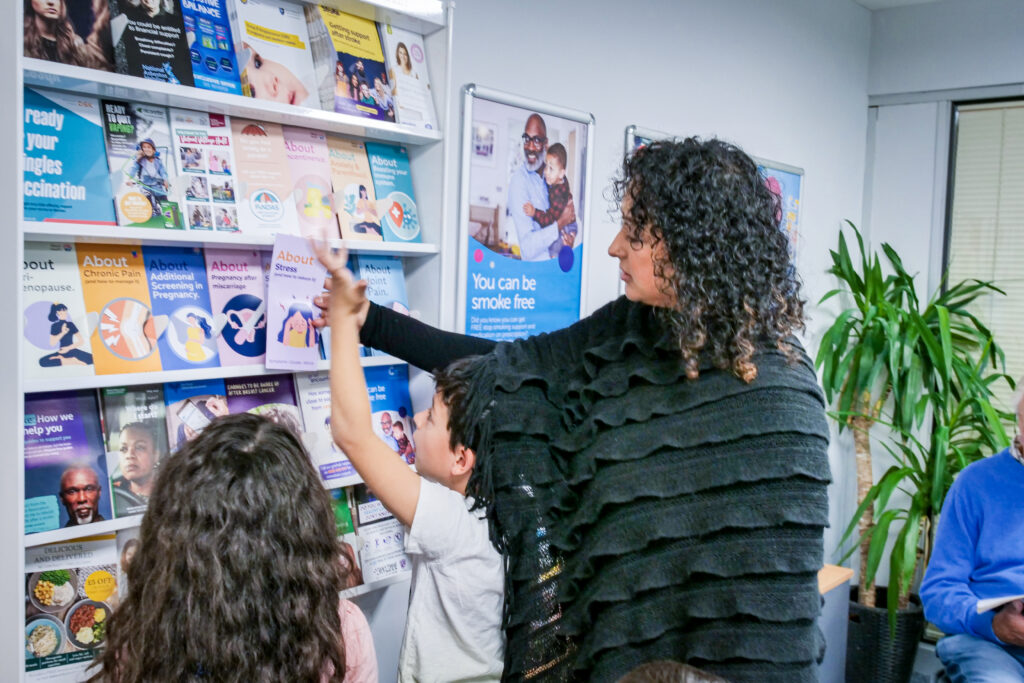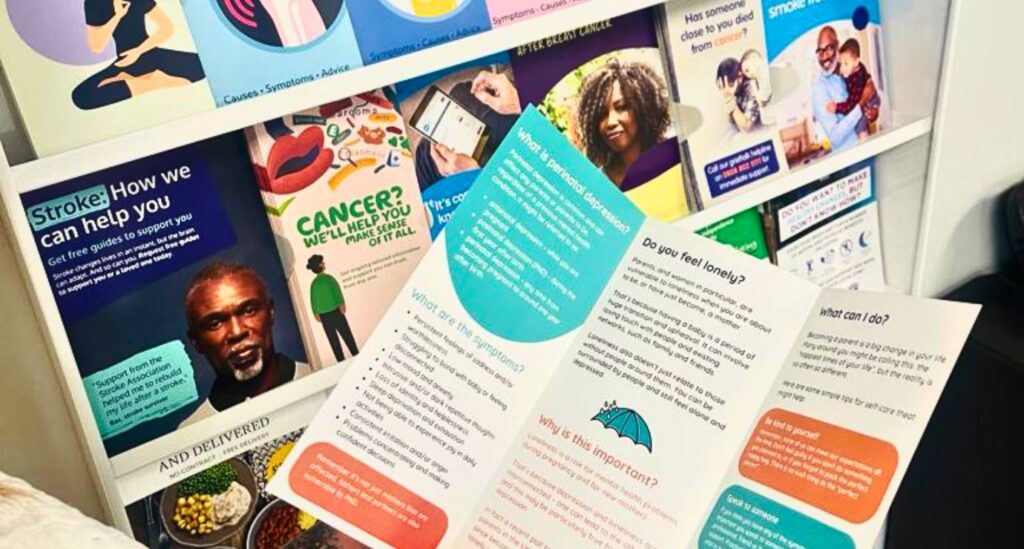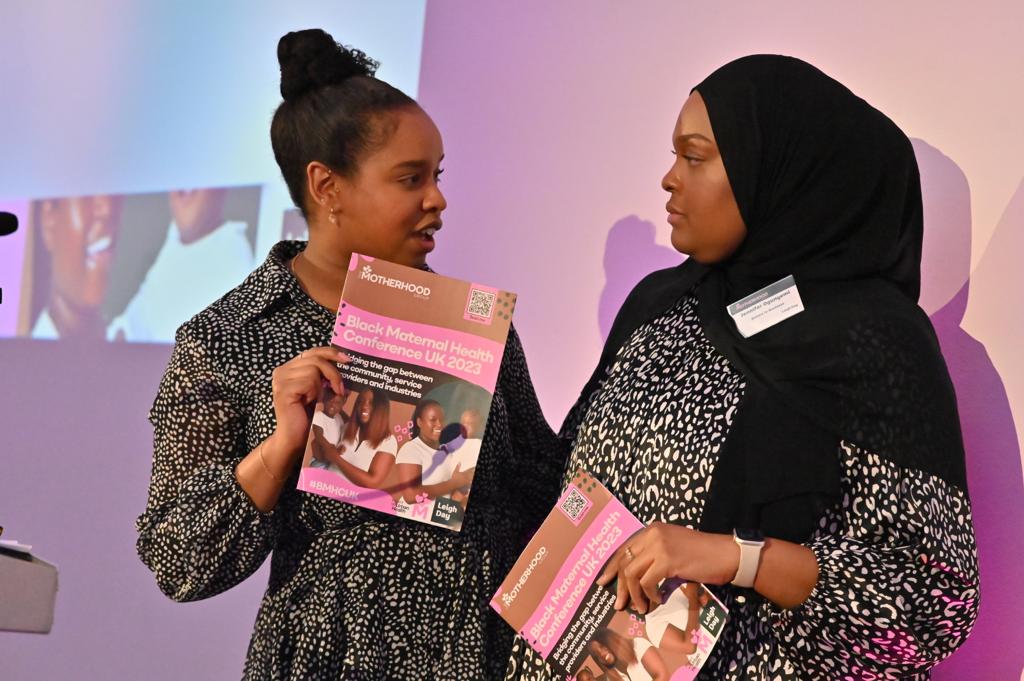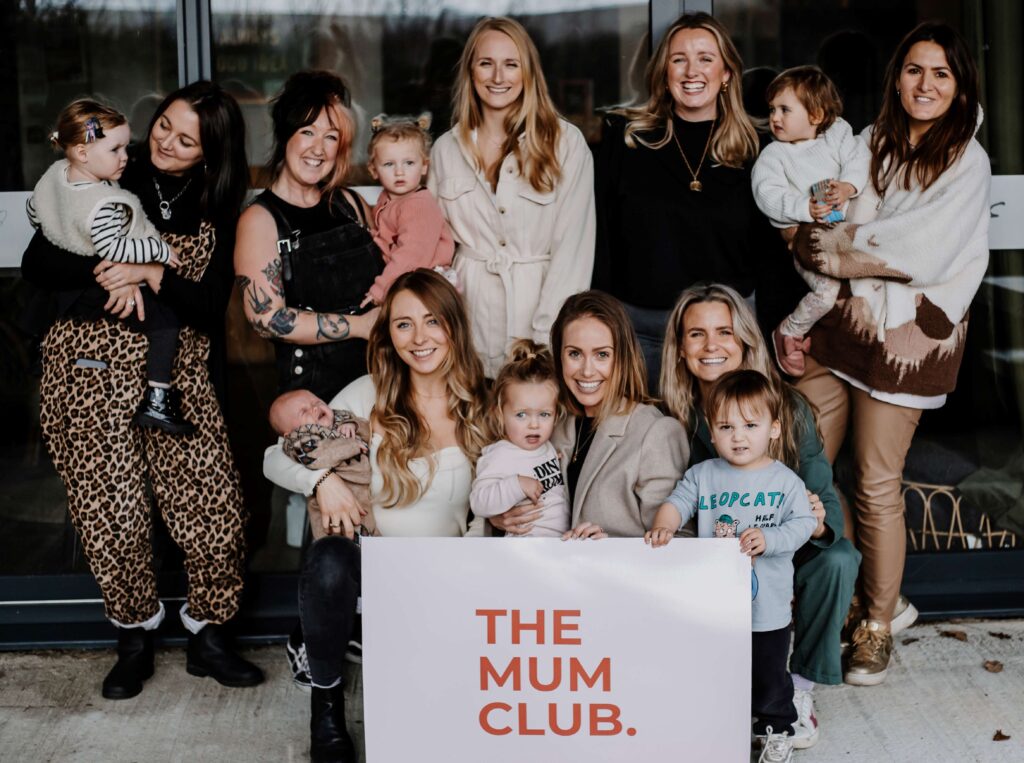What is the Role of Advertisers in Maternal Health Literacy?

Health literature can influence understanding of medical information, treatment options and preventive measures.
Mothers with adequate health literacy are shown to have better self-care and increased physical activity
Societal changes have meant many women are lacking in confidence, emotional insight and practical experience of childcare.
“…we would have paid for a GBS test had we known that was an option…”
Last week, a dear friend of mine was doing what no mother should have to do – attend a hospital inquest for the death of her newborn daughter. Had she known about a test for the virus, perhaps she wouldn’t have been in this situation, and her daughter would have been here.
Had she known. And that’s the problem, isn’t it? We don’t know.
The reason, as I see it, is simple. The government isn’t prioritising maternal health literacy, and there are shortcomings in some executions. The result is that we just don’t know enough. The effects are dire – and they are heartbreaking.
Just take the findings from the Birth Trauma Inquiry. Accounts of women not being listened to when they felt something was wrong, being mocked by staff, and being denied basic needs such as pain relief are leaving swathes of new mothers physically and mentally weakened, damaged, and vulnerable at a time when they should be supported and empowered.
In short, prioritising maternal health and maternal health literacy should be the cornerstone of societal well-being, but it’s not.
As it stands, there are glaring disparities in access to accurate information and services, as well as reports of women from marginalised groups, particularly ethnic minority groups, experiencing particularly poor care due to direct and indirect racism.
The stats are dismal. For instance, 30,000 women a year have suffered negative experiences during the delivery of their babies and one in 20 have develop post-traumatic stress disorder (PTSD).
In this article, I will explore marketers’ pivotal role in promoting maternal health within point-of-care environments and demonstrate how to execute successful campaigns using traditional and digital OOH formats.
What is Maternal Health Literacy?
Maternal health literacy can be defined as the cognitive and social skills which determine the motivation and ability of women to gain access to, understand, and use information in ways that promote and maintain their health and that of their children.
Get it right and you can help improve maternal mental health and prenatal care, reduce maternal morbidity and mortality, and ensure better health outcomes for mothers and their babies.
Get it wrong and campaigns will undoubtedly fall short of such well-meaning goals and their much needed results.
Why is Health Literacy in GP Settings Important?
Before focusing on maternal health, it’s important to touch on health literacy’s role in point-of-care settings, specifically primary care environments like GP surgeries and pharmacies.
"Health literacy represents the cognitive and social skills which determine the motivation and ability of individuals to gain access to, understand, and use the information in ways which promote and maintain good health. Health literacy means more than being able to read pamphlets and successfully make appointments. By improving people's access to health information and their capacity to use it effectively, health literacy is critical to empowerment."
WHO, 1998
Better Healthcare Outcomes
Health literacy influences patients’ understanding of medical information, treatment options, and preventive measures. A big thumbs up. Those with good health literacy are better equipped to communicate effectively with healthcare professionals, empowered to make informed decisions about their health, and more likely to comply with medical advice and treatments.
Research has even shown that mothers with adequate health literacy will practice better physical and mental self-care during pregnancy, make positive changes in nutritional behaviour (including taking dietary supplements), and increase their physical activity.
However, poor health literacy can seriously affect patients’ health outcomes. Growing vaccine hesitancy, failing to take OTC and prescription medicine as instructed, and incorrect usage of health tech devices such as inhalers are all common real-life examples of the impact of poor health literacy.

How Can Advertisers Help Improve Maternal Health Literacy?
Marketers, media planners, and buyers all possess a unique opportunity to enhance health literacy through various channels and campaign areas. But what are some excellent base rules for engagement with this target audience? Here are our tried and tested recommendations.
Educate Don’t Instruct
Pregnant women in general, and first-time mothers in particular, are faced with a daunting amount of information often sourced from NCT/antenatal classes, healthcare professionals and personal online research.
Typically, the information tends to focus on facts surrounding pregnancy, labour and basic baby care skills, and the delivery tends to be instructional rather than oriented towards empowering women to make their own informed decisions.
Research has also found that societal changes, such as changes in family structure, women’s increased participation in higher education and the workforce, and the increased medicalisation of childbirth, have all reduced the historical drip feed of information gleaned from informal communication with other women and child-rearing in extended families.
The result is women are more prepared to manage decisions during pregnancy and childbirth but lacking in confidence, emotional insight and practical experience of childcare, which, in turn, has had a noticeable impact on maternal mental health.
Brands and organisations in the antenatal space focus campaign assets on empowering women to make decisions rather than telling them what to do. Give them choices, unpack issues, and educate them. The key word here is to educate – and for complex story-telling such as this, formats such as leaflets and brochures are a must.
Prepare For Parenthood
As touched on above, women are leaving antenatal classes with a good knowledge of birthing options but feel insufficiently prepared for what lies ahead.
I know this was the case for myself and many of my friends. We knew everything there was about the difference between a c-section and a vaginal birth, but once our newborns were placed in our arms – we didn’t know what to do next.
Again, the theme of confidence crops up in addition to mothers’ unrealistic understanding of the burden of parenthood or the changes in lifestyle and relationships that come with it.
Could this all be reduced by better maternal health education?
How could health literature help new mums navigate changing friendship groups? What local community services are there for her to tap into? My mind jumps to apps like Peanut or communities like The Mum’s Club. These grassroots efforts can engage directly with mothers and their families, providing them with access to valuable support networks.
Frequent primary care users—accounting for 38% of all face-to-face appointments—are associated with parental loneliness, so using posters in the waiting room to signpost mothers to these local initiatives would be a great way to reach your target audience in the place they need it the most.
Educate Healthcare Professionals
A deep-dive analysis of experiences of birthing parents showed that during six-week postnatal checks – a critical touchpoint between HCPs and new mothers – mothers were being let down by their GPs.
- Of those who said they had been offered the postnatal check, only 22% were satisfied with the time their GP spent talking to them about their mental health
- 44% of respondents felt that the GP did not spend enough time talking to them about their mental health

We recently worked with the Pandas Foundation on a series of maternal health leaflets to raise awareness of the services they provide to new parents. Feedback from HCPs in our network was unanimous. They are crying out for more support from brands and organisations in the maternal mental health space and welcome these patient information leaflets with eager and open arms.
Currently, one in five mothers suffer from mental health issues during pregnancy or in the first year after childbirth, and with waiting lists for NHS mental health services growing exponentially, clinicians are in desperate need to know who and where to signpost them to.
Recognise Diversity
Advertisers should prioritize recognising the diverse cultural backgrounds of expectant mothers in the UK. Culturally tailored messaging that resonates with different ethnic and linguistic communities not only addresses health inequities but also makes your campaign work harder and reach more of your target audience.
By acknowledging cultural nuances and customs, marketers can overcome language barriers and foster trust among diverse audiences, thereby improving maternal health outcomes.
How Can Healthcare Providers and Advertisers Collaborate to Improve Maternal Health Literacy?
Healthcare professionals are regularly found to be among the ‘most trusted’ members of our society and the NHS is our most trusted institution, so who better to collaborate with on educational and awareness campaigns?
Here are a few examples of collaborative approaches that might spark some ideas:
- Interactive workshops—Organise community–based workshops and webinars to address local maternal health concerns and provide practical guidance for expectant mothers.
- Social media campaigns—These campaigns may include informative posts, videos, infographics, and live Q&A sessions featuring healthcare professionals discussing common concerns related to pregnancy and childbirth.
- Co-branded educational materials – by strategically placing adverts and resources in GP practices, expectant and new mothers are more likely to receive timely and relevant information during their routine healthcare visits.

Case Studies of Successful Maternal Health Literacy Campaigns
So, which brands and organisations are already doing great work within the maternal health space?
Tommy’s “Sleep On Side” Campaign
Tommy’s launched the “Sleep On Side” campaign in 2017 to raise awareness about reducing the risk of stillbirth during pregnancy. Tommy’s collaborated with healthcare providers, midwives, and parenting influencers to disseminate the message through OOH, social media, online resources, and community events.
This charity is adept at effective maternal health literature. More recently, it worked with us on distributing information on a miscarriage support tool for mothers. This digital tool was amplified using traditional formats, such as leaflets and posters, which went live across our primary care networks, ensuring that those affected by digital poverty weren’t left in the cold.
Pampers “1 Pack = 1 Vaccine” Campaign
Pampers partnered with UNICEF for the “1 Pack = 1 Vaccine” campaign to eliminate maternal and neonatal tetanus (MNT) worldwide. For every pack of Pampers diapers purchased, a portion of the proceeds went towards funding vaccines to protect mothers and babies from tetanus. Through this campaign, Pampers raised awareness about the importance of immunisation and helped prevent maternal and neonatal deaths caused by tetanus in developing countries.
Nurofen’s ‘Gender Pain Gap’ Campaign
Nurofen’s award-winning integrated campaign aimed to get women diagnosed and treated sooner through a data-led TV, OOH print and digital approach.
As part of the campaign (which included a series of industry-first commitments, including pioneering gender balance in clinical trials, new research grants, and gender bias training for 10,000 healthcare professionals in leading pharmacy chains in the UK), Nurofen launched the Pain Pass, an easy-to-use tool to empower women to have more effective conversations with healthcare providers.
Reckitt and the Nurofen team employed our national network of leaflet racks to ensure the tool was available at the point of need. Millions of patients had access to the tool before entering an F2F consultation with a healthcare professional. Nurofen also used our poster network in 2,000 sites, which raised further awareness of the PASS acronym and signposting patients to the tool in the waiting room rack.
"We recognised that our campaign needed to be visible in point-of-care environments. Patients needed the tools we had built in places where they were proactively seeking solutions for their health concerns – so GP surgeries were the perfect match. We’re encouraged with the feedback from HCPs and patients and would recommend working with IDS for health awareness campaigns."
Assistant Brand Manager, Nurofen
What Else Needs to Be Done to Improve Maternal Health Literacy?
Several challenges continue to hinder maternal health literacy in the UK. These are:
Feature Culturally Relevant Content
Most noticeably in our network is a distinct lack of literature aimed at black maternal health and black maternal mental health. This feels at odds with research that clearly shows glaring disparities in access to accurate information and services as well as reports of women from marginalised groups, particularly ethnic minority groups, experiencing particularly poor care due to direct and indirect racism.
Understanding nuanced habits and diverse cultural identities within Black communities can help organisations design more effective health communication strategies, increase engagement and build trust.
Include Traditional Educational Materials
As a business, we’ve spoken a few times about the role of traditional media in healthcare and, risking sounding like a broken record, print is timeless.
From leaflets and brochures to newspapers and magazines, tangible formats offer tactile experiences digital mediums cannot replicate and, when it comes to healthcare marketing, are crucial for cost-effective and educational engagement with your chosen audience.
Plus when you have a crying babe in arms, or are surviving on an hour of sleep, sometimes having a take-home format that you can read and digest in the safety of your sitting room is far better than trying to remember what that billboard said as you marched by on yet another naptime buggy mission.
Increase Educational Programs
You may also look to produce educational programs to educate expectant mothers about maternal health topics – maybe in the form of podcasts or webinars. These programs could feature interviews with healthcare professionals, testimonials from mothers, and demonstrations of prenatal exercises, breathing techniques, and relaxation methods for labour and delivery.
Whilst these educational programmes might live online, do not forget the need to bridge the gap between offline and online worlds. Take excerpts and include them in a leaflet and poster, driving your audience to the site with a QR code .

Health literacy is crucial for improving women’s self-care and self-advocacy and the relationship between maternal health outcomes and health literacy deserves far more attention than it’s currently getting.
If you have a product or service that targets new and expectant parents, you could play a crucial rolee in empowering women so they understand more about their choices and educate healthcare professionals on the complex world of maternal health.
Make sure they do know about that test. Give them a choice. Give them a voice.
I’d be more than happy to chat to you about your campaign and our services, so please send me an email on harriet@idsmedia.co.uk or fill in our contact form, and I will be in touch.